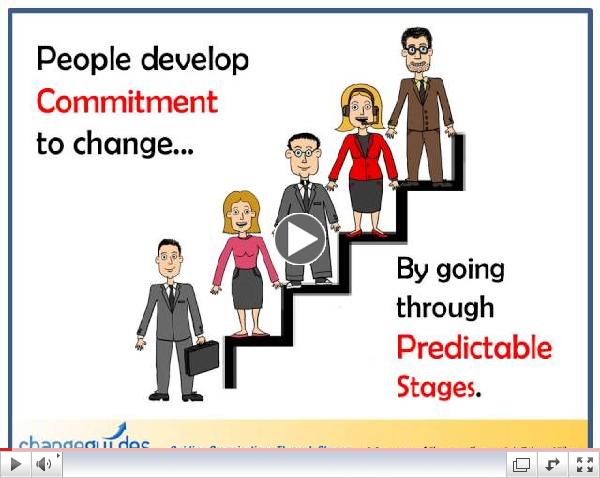Exciting Change Guides News!
|
| |
Check Out
Our Newest Youtube Video!
|

| |
Change Guides will be a sponsor at the Association of Change Management Professionals Conference,
March 30-April 2, 2014
in Orlando, FL!
| |
| |
Our Change Management Certification is now offered in Sydney, Australia
Details coming soon!
| |
| |
|
2014 Events
|

Change Management Certification
Mar 11-13 Cincinnati
Oct 13-15 Dallas
Dec 2-4 Cincinnati
PMI SeminarsWorld
Best Practices
in Organizational
Change Mgt
Mar 31-Apr 1 Scottsdale
June 23-24 Orlando
|

Recertification units
for ASQ
|
|

Follow Stacy
Aaron on Twitter

Follow Kate
Nelson on Twitter
 Join us Join us
on LinkedIn
|
|
|
|
Greetings
|
The New Year has arrived and Change Guides wishes you the very best for 2014!!
Our Winter Newsletter features two articles on the topic of Communication; a topic that is a perennial favorite and remains ever relevant. We hope you find them helpful in your change management project.
 | |
The Eight Constants of Change - Constant #1:
It Takes a Village
|
With this issue we are launching a new series of YouTube videos featuring the Golden Nuggets from our book, The Eight Constants of Change. You will find a new Chapter published one each month for the next 8 months. We hope you enjoy viewing them as much as we enjoyed creating them!!! Eight Constants.
As always, keep in touch and let us know what you think! E-mail Feedback.
All the best,
Kate and Stacy
|
|
Back to Basics
| |
326,094 - That's the number of books Amazon lists if you use the search word, "Communication." 326,094!! Who has the time? Which ones do you choose to read? Yet, communication can't be ignored. Effective communication is the foundation of effective organizations. Even with well articulated visions, crafted key messages, detailed newsletters and organized department meetings, employees say that their bosses don't tell them enough. Bosses think, "I try to keep them informed, why isn't it working?"
This article outlines four basic approaches to improve organizational communication, especially when the organization is changing. These four approaches are simple ways to increase communication effectiveness by providing clear, timely, audience focused messages while encouraging two-way communication.
Approach 1 - This process helps clarify your messages and stay audience focused. Start by using a "Elevator Speech Form" - This form helps you create a mini-speech. It forces you to stop and think, "what is important that I communicate to my employees now" and "how can I get my point across in a minute?" As a leader or manager, you can write it in as a "to do" every Monday morning. Take time to think about what message to convey this week. Should it be the same as last week or is there new information to share about a company initiative or strategy? Put the message in language that the employees can relate to. You can use this to kick off a meeting or while waiting in line at the cafeteria. Start by saying, "I want to take a minute to share information about XYZ".
|
Don't Hide From The Truth!!
| |
Communicating about upcoming changes takes work and courage. If done well, communicating about change starts a dialogue. Dialogue encourages questions and cultivates understanding. As managers, you don't have all the answers but you get all the questions. When I advise managers on communicating to employees, I tell them to follow these principles:
- Tell them what you know
- Tell them what you don't know
- Tell them when you expect to have more information
Most managers get principle #1. They want to keep employees informed. But principle #2 is just as important. Some managers dislike admitting that they don't have all the information. Muster some courage and be honest. Employees need to know what's undecided and when decisions will be made.
When you make the effort to communicate, will they believe you? That hits on a bigger issue, trust. If your leadership has built trust with the employees by doing what they say and telling the truth in the past, the employees, for the most part, will believe you. If leaders and managers have a history of saying one thing and doing another, your communication may fall on deaf ears. Maybe they trust you but they know you're getting your information from the leaders whom they don't trust.
|
|
In Your Shoes
|
Anne Witherspoon Senior Vice PresidentDirector of Treasury Mgt. Ops. Senior Vice PresidentDirector of Treasury Mgt. Ops.
Texas Capital Bank
Have you approached projects differently after the certification? If so, how?
Absolutely. After certification, I went back and re-evaluated my projects that are underway. I pulled in key project team members and went through some of the tools (Readiness Audit, SWOT and Stakeholder Analysis). Doing this really helped us see critical tasks that had been left out of the planning and implementation process.
What advice do you have for others trying to drive change?
Don't assume everyone understands the change management process or how important it is to project success. Proactively reach out to team members, stakeholders and others to engage them in the process. Utilize the tools-the tools provide a clear, concise and realistic picture of your project.
What one thing has helped you the most in driving change in your organization?
The thing has helped the most are the Tools for Managing Change. Going through the checklists and templates to document project information-- with an emphasis on change management-- has been invaluable. The Tools provide concrete data to help all stakeholders understand what is really required to achieve success.
|
|
|
|
|